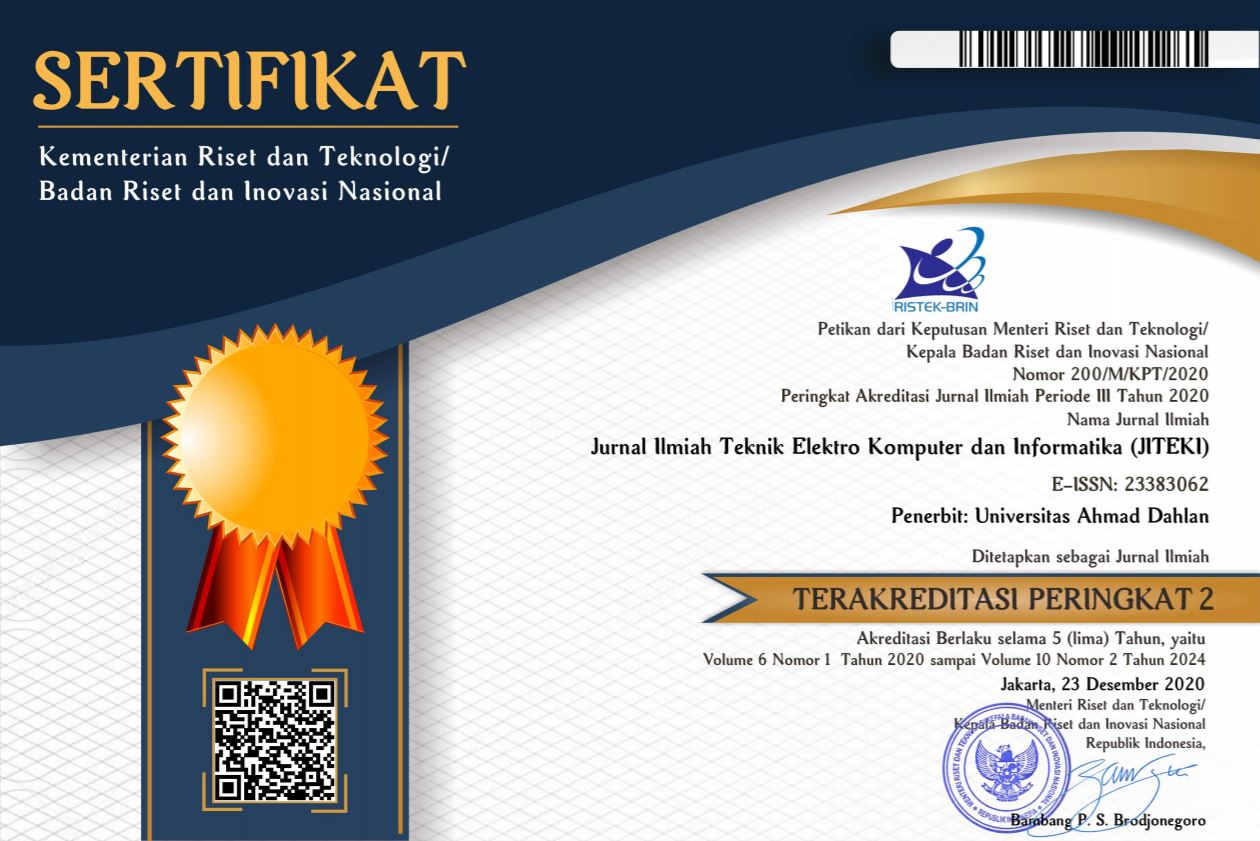Water Quality Monitoring with Regression Based PPM Sensor for Controlling Hydroponic Dissolved Nutrient
DOI:
https://doi.org/10.26555/jiteki.v9i2.25915Keywords:
Hydroponic, Automation, Monitoring, Dissolved Nutrient, RegressionAbstract
Hydroponic cultivation requires rigorous monitoring and control of several parameters, such as turbidity, electric conductivity, acidity (pH), dissolved oxygen and nutrient, which usually be measured once a day manually. Therefore, automation in hydroponic cultivation requires those water quality information as the controlled variable. The dissolved nutrient is especially important because it significantly affects the hydroponic plant growth. Acquiring the dissolved nutrient can be done by using a PPM (parts per million) sensor, but most of the time the sensor needs further processing to obtain the desired measurement. This study presents a reading correction of a PPM sensor based on a regression method so the desired measurement can be done. Sample water with different PPM, such 309 PPM, 290 PPM, 762 PPM, 1910 PPM and 2420 PPM are measured first using a standard PPM meter. Then, the sample PPM is measured by using the PPM sensor. The study also investigates the best regression method to map the PPM sensor measurement to the standard PPM meter measurement by comparing several line equations, such as linear, exponential, polynomial and logarithmic. The function coefficient and bias is chosen by using least square methods. After comparing, the result shows that the polynomial function provides the best reading correction with average error of 76 PPM. The error is especially few when measuring the higher PPM (more than 500 PPM), which is suitable with hydroponic cultivation. Therefore, the PPM sensor with the polynomial function shown in this study can be used to measure the dissolve nutrient accurately in the automation of hydroponic activity compare to other line equations. This study is limited to small sample sizes to prove the concept. The generalization can also be considered in the future study.
Downloads
Published
How to Cite
Issue
Section
License
Authors who publish with JITEKI agree to the following terms:
- Authors retain copyright and grant the journal the right of first publication with the work simultaneously licensed under a Creative Commons Attribution License (CC BY-SA 4.0) that allows others to share the work with an acknowledgment of the work's authorship and initial publication in this journal.
- Authors are able to enter into separate, additional contractual arrangements for the non-exclusive distribution of the journal's published version of the work (e.g., post it to an institutional repository or publish it in a book), with an acknowledgment of its initial publication in this journal.
- Authors are permitted and encouraged to post their work online (e.g., in institutional repositories or on their website) prior to and during the submission process, as it can lead to productive exchanges, as well as earlier and greater citation of published work.

This work is licensed under a Creative Commons Attribution 4.0 International License

